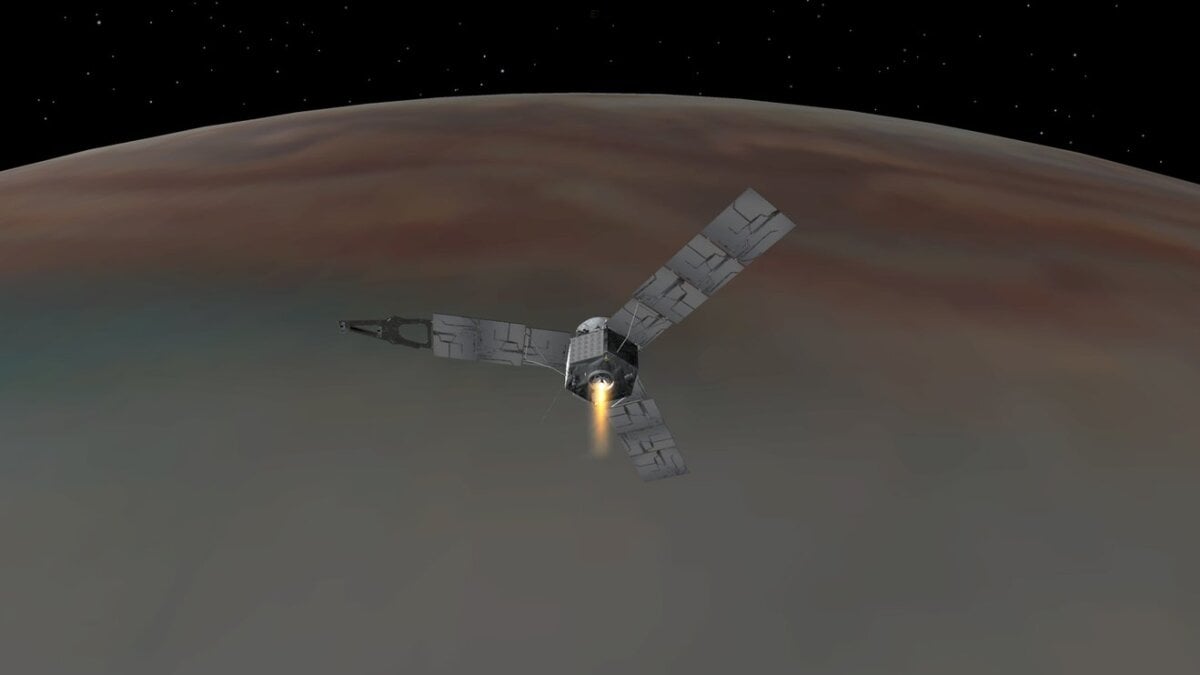NASA’s Juno spacecraft has made several close swoops by Jupiter’s volcanic moon Io, and it’s beamed back stunning views of this distant volcanic land.
The recent flybys in late 2023 and early 2024 have provided planetary scientists deeper insight into this tortured moon’s volcanic workings. NASA has now released new images from this volcano land, captured by Juno’s highly sensitive camera called the Stellar Reference Unit, showing hot lava and fresh lava flows.
“During the #JunoMission’s close flybys of Io, its instruments detected recent changes on the surface, and even the glow of active lava,” the space agency posted online.
In the image below, snapped on Dec. 30, 2023, active lava breakouts on the surface are shown by the red arrows and circles. This volcanic region is called the Zal Montes-Patera complex, and it’s comprised of those two mountains sandwiching a dark “patera,” made of fresh lava flows.
Mashable Light Speed
Juno was just 932 miles (1,500 kilometers) above Io when it captured these images, which are the highest-resolution views Juno has ever captured of Io.
NASA’s Juno spacecraft detected glowing lava hot spots in Dec. 2023 during a close flyby.
Credit: NASA / Caltech-JPL / SwRI
The following image shows an “unprecedented elongated, curved emission feature,” NASA explains, which is located near the dark patera. Planetary scientists suspect it’s an active lava channel. Also visible is part of a giant lava flow, called Tonatiuh after the Aztec deity, that’s 98 miles long and 11 miles wide. It’s located on the left edge of the left image and the top edge of the right image.
High-resolution views of the Zal Montes-Patera complex on Io.
Credit: NASA / Caltech-JPL / SwRI / LPI/USRA
Io is blanketed in erupting volcanoes because it’s relentlessly locked in a tug-of-war between nearby objects, notably Jupiter. “Not only is the biggest planet in the solar system forever pulling at it gravitationally, but so are Io’s Galilean siblings — Europa and the biggest moon in the solar system, Ganymede,” NASA explained in a statement. “The result is that Io is continuously stretched and squeezed, actions linked to the creation of the lava seen erupting from its many volcanoes.”
NASA’s recent flybys of Io, however, reveal that it likely doesn’t contain a global magma ocean beneath its surface, as determined by new observations of the moon’s gravity. Instead, each of Io’s 400 or so volcanoes may harbor their own chamber of magma.
And as Juno’s swoops by Io reveal, this roiling hot rock often pours onto the surface, creating a constantly evolving, extreme volcanic land.
